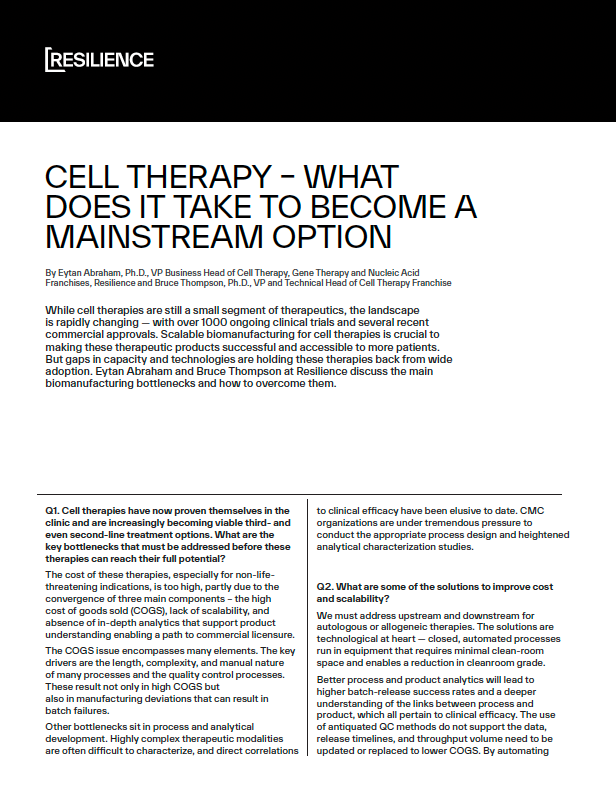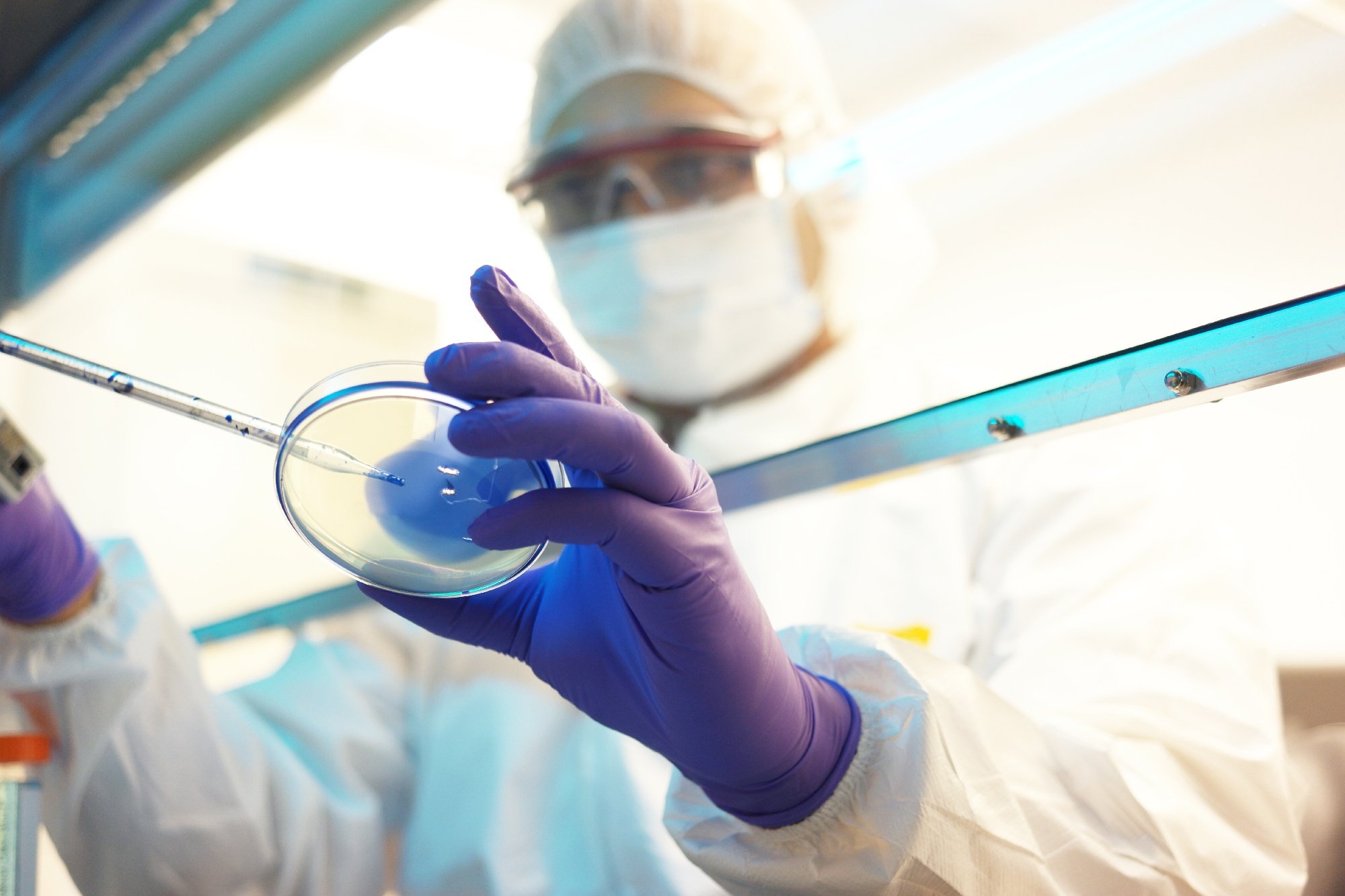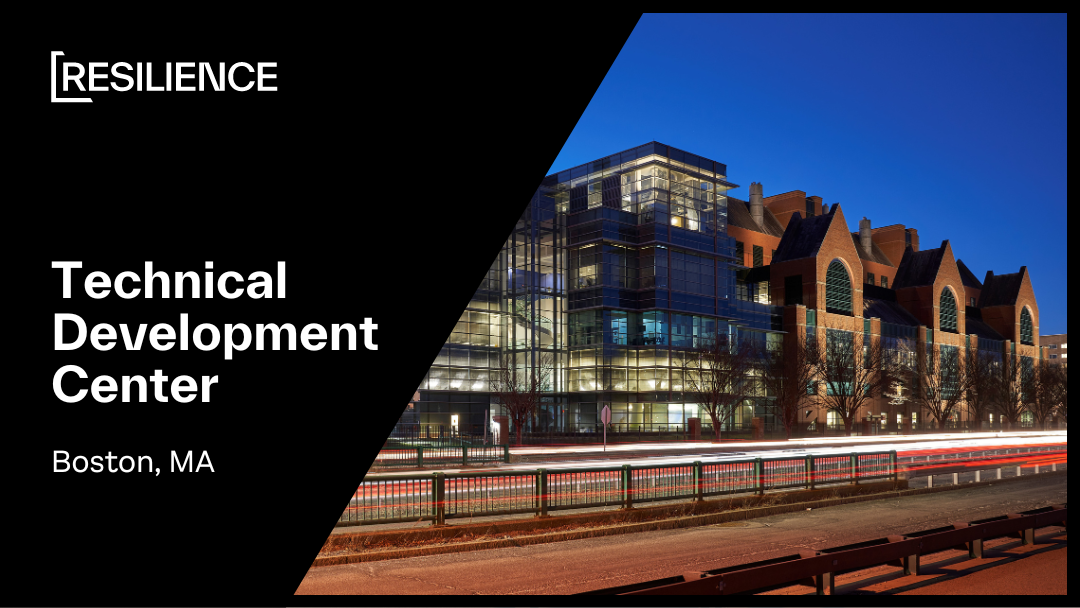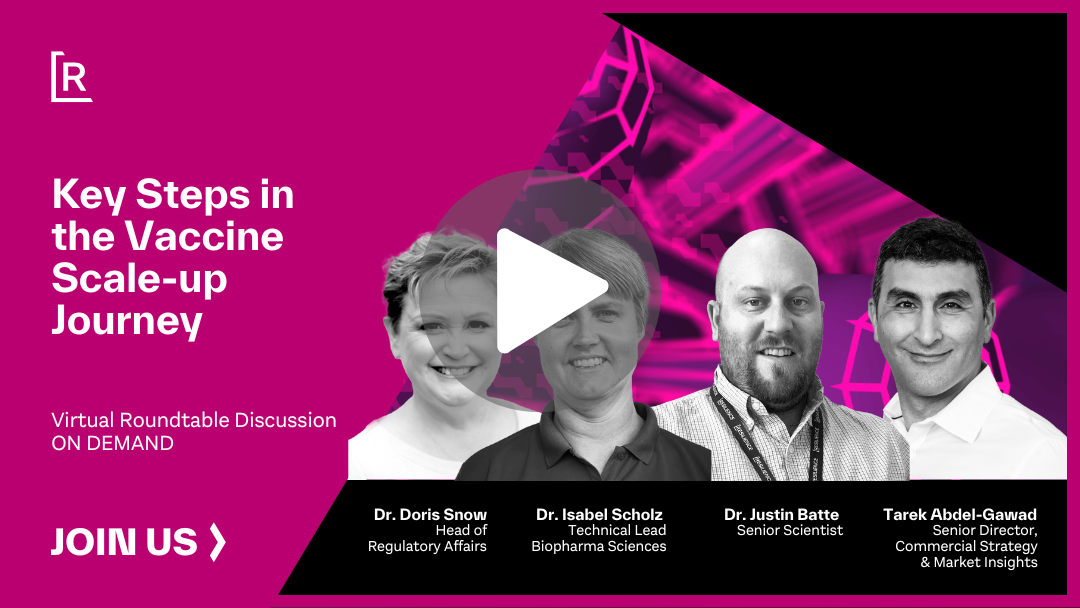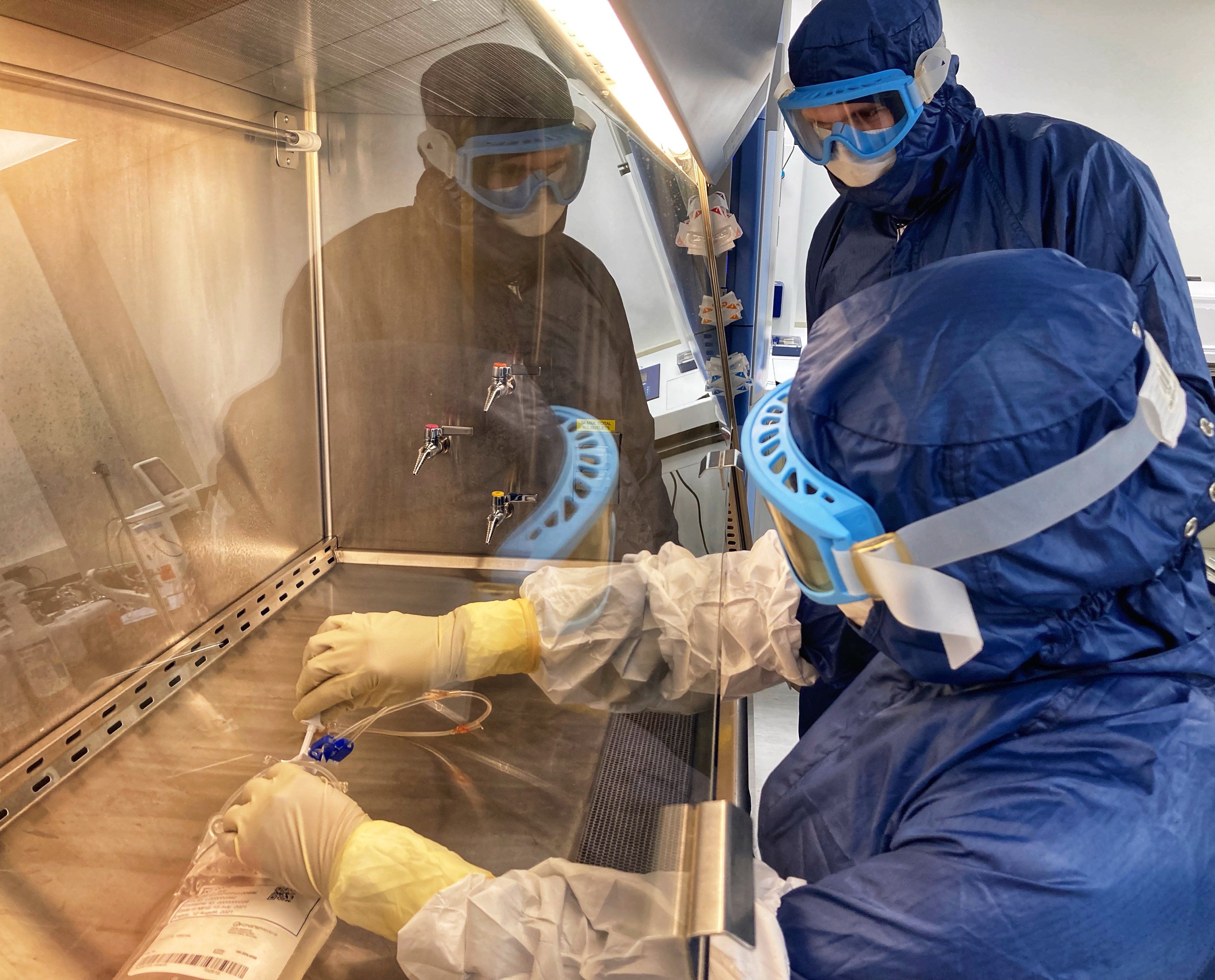
Leveraging Partnerships to Achieve Cell Therapy Success
What impact can partnerships have in cell therapy commercialization success? Eytan Abraham at Resilience discusses the need for a modernized partnership model and how supporting early-stage academic investigators can impact long-term success.
What can manufacturing partners do differently to help address cost and scalability issues?
COGS will continue to shape the adoption of cell therapies. Reimbursement from private and public payors continues to be a significant issue. As more indications are treatable, COGS will increasingly become a bottleneck.
CDMOs are not necessarily incentivized to do what is best long term for their therapeutic clients. The more the manufacturing process is complex, lengthy, and manual, i.e., the higher the COGS, the more money per batch CDMOs make.
But provider and innovator can realize efficiency and mutual benefits in several ways together.
One is creating genuine long-term incentives for the CDMO by rewarding the CDMO for the commercial success of the therapy. At Resilience, we partner differently. In addition to offering fee-for-service work, we can also put a shared incentives plan in place to inspire long-term success. The result is a better alignment of incentives between the therapeutics company and the biomanufacturing partner.
The early engagement and collaborative nature of the CMC development activities bring increased “alignment” in the technical arenas. This approach ensures that process and analytical learnings are inherent in the development pathway and gives a deeper product understanding, reducing future cycle times (e.g., reducing or eliminating tech transfer for late-stage or pipeline products with similar process/analytical requirements).
In addition, beyond focusing on developing and providing the technologies needed for superior manufacturing – addressing the COGS, scalability, and quality elements — we devote a tremendous amount of resources and focus on technological innovation that will propel the field forward rather than on margins and revenues. We believe “we will build it, and they will come.”
Many of these therapies are being developed by academic medical centers and are manufactured locally for early-phase clinical trials. What role do they play?
The investigators developing these therapies at the academic medical centers are the backbone of the innovative research engine in the cell and gene therapy industry. The fact that these centers also have GMP capabilities to drive early-phase clinical trials is wonderful. It accelerates clinical proof of concept! So how can we support the investigators and the clinical center-based manufacturing to reduce their risk and improve their chances for commercialization?
As would be expected and is appropriate, the investigators focus on the therapy and impact for their patients – its biology, getting to ‘first in patient’ quickly. In many cases, once the therapy shows clinical promise, and is spun-out or acquired by biotech or pharma, there is a huge drive to progress quickly through later clinical stages, making it difficult for investigator to stop and invest the time and funds needed to improve the manufacturing process, COGS, and scalability.
Unfortunately, this has led to some therapies failing to garner widespread adoption, being very expensive and difficult to manufacture. One of the elements that Resilience focuses on is creating partnerships with academic medical centers with cell therapy programs and manufacturing facilities to implement best-in-class manufacturing and analytical methods as early as possible.
What does the future hold for cell therapy from a manufacturing and accessibility standpoint?
Cell therapy has a very bright future. The amount of innovation, clinical trial initiation, and the expansion of clinical indications are astounding. There will be many successes with favorable clinical results. Reduction in side effects and manufacturing failures will be critical as these therapies mature. At the same time, a lot of what we discussed above will need to happen for this modality to succeed and to make these life-saving therapies accessible to as many patients as possible.
These advances will allow cell therapies for larger indications (e.g., solid tumors, autoimmune disorders, infectious diseases, etc.) as well as non-life-threatening indications (e.g., diabetes, orthopedic) to become mainstream. As a developer and a provider of biomanufacturing technologies and services, our job is to invest and focus on those two elements and evolve them rapidly to support the field.
Lastly, using novel business structures to serve patients better and foster a synergistic relationship between therapy developers and biomanufacturing service providers will accelerate clinical activities. It will also improve the chances of clinical and commercial success. We are aggressively developing this paradigm with our therapeutics partners and moving the needle here at Resilience.
About the Author:
Eytan Abraham heads Resilience Cell Therapy, Gene Therapy and Nucleic Acid Franchise Business, focusing on partnering with leading Pharma, Biotech, and Clinical Centers to deliver process development as well as clinical and commercial biomanufacturing. Bringing to bear novel and enabling manufacturing solutions, platforms, and capabilities to benefit patients in need.
Prior to Resilience, Eytan was at Lonza for eight years, heading of the Personalized Medicine Business Unit, as well as Lonza’s Cell and Viral Therapy R&D; focusing on developing manufacturing solutions for the Cell and Gene therapy continuum. Prior to this, he was head of therapeutic pipeline development at Pluristem Therapeutics, bringing to the clinic cell therapies for cardiovascular indications.
Eytan holds a Ph.D. in developmental and molecular biology from the University of Maryland Biotechnology Institute, and a post-doctorate in cell therapy and tissue engineering from the Harvard-MIT Biomedical Engineering Center and Harvard Medical School.
